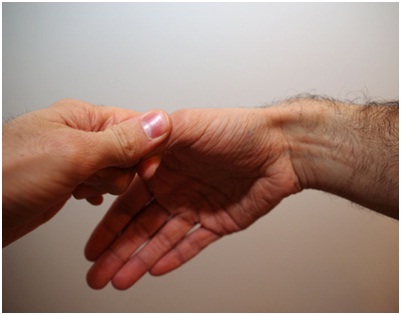De Quervain’s Tenosynovitis Symptoms, Causes, Diagnosis and Treatment

What Is De Quervain’s Tenosynovitis?
De Quervain’s Tenosynovitis is the inflammation of tendons on the side of the wrist at the base of the thumb.
Those who have De Quervain’s Tenosynovitis experience pain in turning their wrists, grasping anything and in merely making a fist.
Causes Of De Quervain’s Tenosynovitis:
De Quervain’s Tenosynovitis can be caused by the following:
- Overuse of the wrist
- Direct injury to the wrist or tendon
- Inflammatory arthritis, such as rheumatoid arthritis
Presence of certain factors increases the likelihood of developing De Quervain’s Tenosynovitis.
The Factors Include The Following:
Those between the ages of 30 and 50 are known to be at a higher risk of developing De Quervain’s Tenosynovitis.
The condition is more common in women than men.
- Being pregnant..
- Baby care.
Lifting a child repeatedly involves using one’s thumbs as leverage and may lead to developing the condition.
- Jobs or hobbies that involve repetitive hand and wrist motions.
Symptoms Of De Quervain’s Tenosynovitis:
Symptoms of De Quervain’s Tenosynovitis include:
- chronic pain
- spasms
- tenderness
- occasional burning sensation in the hand
- swelling over the thumb side of the wrist
- Difficulty gripping
- A “sticking” or “stop-and-go” sensation in your thumb when moving it
Diagnosis Of De Quervain’s Tenosynovitis:
De Quervain’s Tenosynovitis can be diagnosed via:
- Performing a practical exam
- Performing Finkelstein test
Treatment Of De Quervain’s Tenosynovitis:
The goal of treatment available for De Quervain’s Tenosynovitis is to reduce inflammation and avoid reoccurrence of the condition.
In order to do so, the following treatments are undertaken:
- Medications
- Ibuprofen
- Naproxen
- injections of corticosteroid medications
- Therapy
- Immobilizing the thumb and wrist, keeping them straight with a splint or brace to help rest the tendons
- Avoiding repetitive thumb movements as much as possible
- Avoiding pinching with the thumb when moving your wrist from side to side
- Applying ice to the affected area
- Surgery
By : Natural Health News




